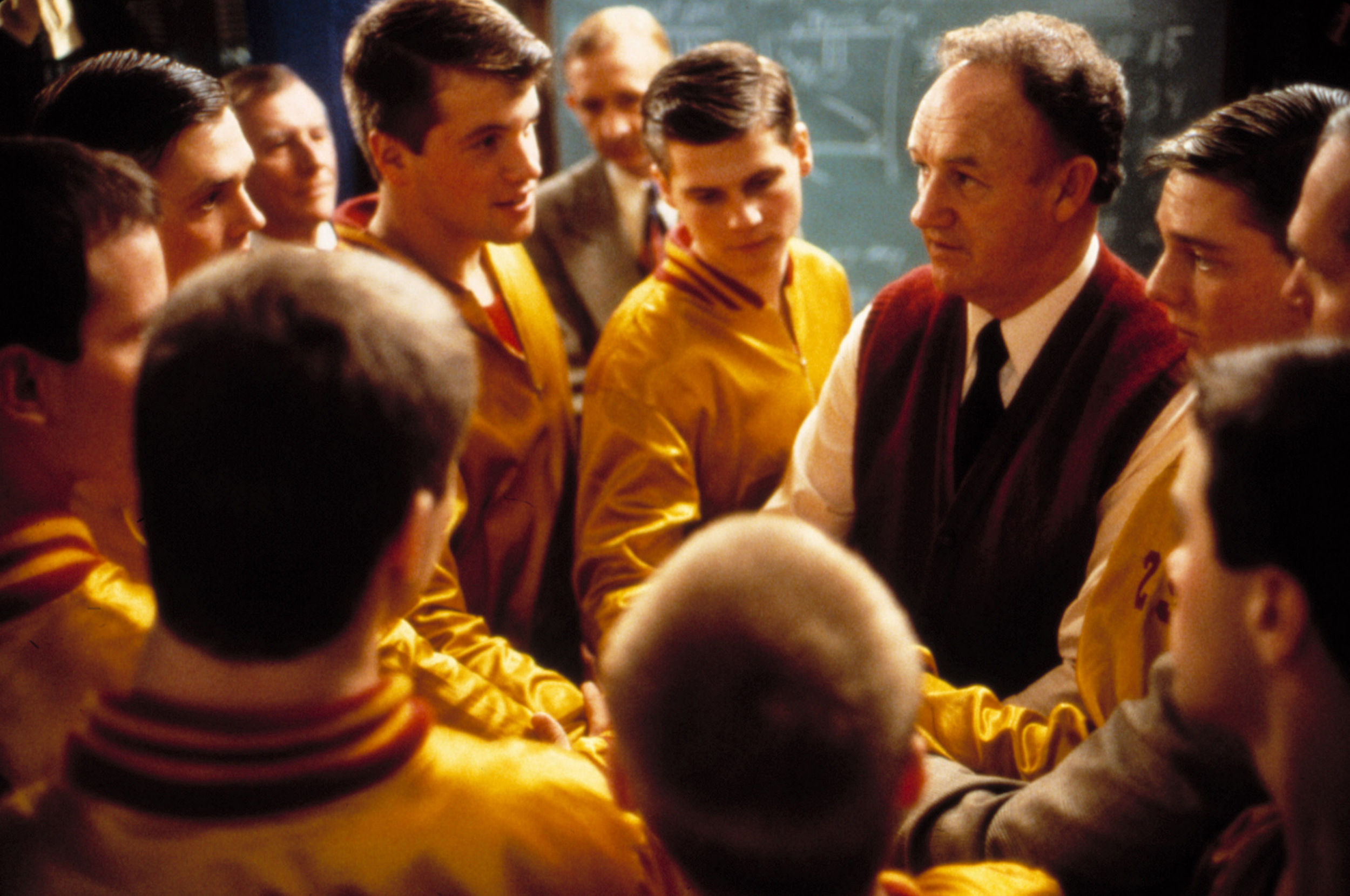The pivotal basketball game in the classic movie “Hoosiers.” Photo courtesy of TODAY.
ABIGAIL OAKLEY | STAFF REPORTER | aloakley@butler.edu
Indiana: it is the state of basketball, cars and corn. Some call it home, some call it the “Crossroads of America,” and some just call it flyover country. While Indiana has not been depicted in the media as much as some other states, it has still been the backdrop for many important and iconic movies and TV shows over the years. From “Hoosiers” to “Parks and Recreation,” Indiana has been depicted in a plethora of ways. These portrayals reveal how the state is perceived, as well as how its citizens perceive themselves.
For many movies and shows, small towns in Indiana provide the perfect example of a “normal” town — albeit a normalcy based on middle class whiteness — where something important or abnormal typically does not happen. For movies like “Close Encounters of the Third Kind,” Indiana is an unexpected setting for the extraterrestrial events of the movie. The director, Steven Spielberg, could play with this setting and create the suspense and fun that he wanted. The main character, Roy Neary, led a very “typically Midwestern” life prior to an alien invasion, which makes the strange events of the movie all the more unusual for the setting.
Similarly, the Netflix show “Stranger Things” takes advantage of the rural Indiana setting. Via Sarjent, a sophomore music industry studies and classics double major and Indiana native, said that the national perception of Indiana makes it a great setting for a show like “Stranger Things.”
“There aren’t a lot of shows based in Indiana,” Sarjent said. “It’s a bit of a blank slate and a mystery for outsiders … Not a lot of people know what it’s like here.”
In the show, Hawkins, Indiana is a normal town where one can expect normal suburban events from day to day. The people are friendly, and the town’s children live a life without much fear. This makes the supernatural elements of the show more shocking and eerie. If these events can take place in such a normal Hoosier town, is anyone safe?
These depictions of Indiana do not seek to offer new perspectives on the state. Instead, they use its relative obscurity to their advantage. The “mystery” that Sarjent referred to is exactly what these media portrayals need to sell their suspense. There are not many ways for people outside of Indiana to have an accurate understanding of the state, and some shows such as “Stranger Things” take advantage of that ambiguity. They leave the image of white picket fences and corn untouched.
Natalie Burkhart, a dance pedagogy major from Ventura, California, said that she did not know very much about Indiana before attending Butler.
“I had never really thought about [Indiana],” Burkhart said. “I associated it with the Midwest and cornfields … Most of what I knew about Indiana was from shows like ‘The Middle’ that I grew up watching.”
While some media depictions may not shed much light on the reality of Indiana, others make an effort to capture the essence of the state. “Parks and Recreation” shows a dramatized version of rural Indiana, but it manages to reflect some important aspects of its culture. The show highlights the importance of high school basketball, the outdoorsy culture and the community feeling of small Midwestern towns. It also features famous places in Indiana such as Indiana University and St. Elmo Steak House. For residents of the state, it can be exciting to see these places in such a high profile show.
Through the town of Pawnee’s history and interactions with the Indigenous peoples, it also acknowledges the whiteness of this Midwestern ideal. Interactions between characters of color and white characters also open this conversation. Jerry leads a very typical, quiet Midwestern life as a white man, and this is sometimes used to satirize the American Dream in general.
Perhaps Indiana’s biggest legacy in the media is the importance of sports. This has been a part of the state’s identity for decades. Between the Indianapolis 500, the Colts, the Pacers and the NCAA headquarters, Indiana has become a central sports location. The 1969 movie “Winning” features the Indianapolis 500 as a part of the culture of Indiana.
Since Indiana has many prominent colleges, college sports are also featured in the media. One of the most notable examples is the movie “Rudy” which is about a young boy who dreams of playing football at the University of Notre Dame.
Arguably though, one of the most influential Indiana sports movies is “Hoosiers.” This movie captures the importance of basketball, particularly high school basketball, in Indiana.
Graham Honaker, the executive director of principal gifts at Butler University, said that “Hoosiers” is important to the identity of Indiana.
“It amplifies how synonymous basketball is with Indiana,” Honaker said. “It’s not only an important sports movie — it’s an important Indiana movie.”
For better or for worse, Indiana is depicted as classically Midwestern. Only time will tell what that means for the state.




Pingback: Indiana IN The Media | The Butler Collegian » Alast Paperwriter